Episode 1733: Signs and Wonders
So I am sure you all heard that a statue of St Peter in Buenos Aires was struct by lighting and both the halo and keys were destroy, Now you know that Benus Aires was the seat of Pope Francis cardinalship and bishopric prior to becoming Pope was and he was Cardinal archbishop Jorge Bergoglio.
What makes this even more compelling is that it was his birthday but also the day before being announced blessings for same sex couples. Coincidence perhaps but when did we hear about another lighting strike> It was the day Pope Benedict stepped down as pope and that time the lighting strict the dome of St Peters basilica.
We all know that miracles were the greatest at the beginning of the Church and the reason was Christ wanted to send the message that his mystical body was real and so the conversions were in the thousands due to these signs and wonders and then over time the faith grew and became strong and so the multitude of signs and wonders started to lessen but with every saint Christ proved his existence through them. We hear it through out the lives of saints.
But what about today? We hear about the Marian apparitions like the miracle of the sun in 1917 which was said to be the greatest sign since the ascension of Jesus in heaven which was witnessed by many. They say over 70,000 people in Fatima Portugal witnessed the miracle of the sun and even the staunch atheists and dare say ruling freemasons of Portugal witnessed the miracle.
But today you see very little signs and wonders, Could it be that Christ is wanting our faith to return and will only send very specific signs and could these lightening strikes be just that?
Well many discount them as mere coincidence. Do you?
Let’s look at the Churches position on signs and wonders.
Within the Catholic Church, as Catholic theology has evolved over the centuries.
Miracles: The Catholic Church recognizes the possibility of miracles extraordinary events that cannot be explained by natural laws and are attributed to divine intervention. Miracles are often seen as signs of God's presence and power. The Catholic Church carefully investigates reported miracles before officially declaring them as such.
Apparitions: The Catholic Church acknowledges that individuals, particularly saints, may experience visions or apparitions. These are considered private revelations and are not considered on the same level as public revelations, such as those found in the Bible. The Church investigates these apparitions and may declare them worthy of belief or not.
Sacraments: In Catholic theology, the sacraments are considered signs and instruments of God's grace. They are outward signs instituted by Christ to confer grace. The seven sacraments—Baptism, Confirmation, the Eucharist, Reconciliation, Anointing of the Sick, Holy Orders, and Matrimony—are central to Catholic worship and understanding of God's presence in the world.
Prophecy: The Catholic Church acknowledges the gift of prophecy as outlined in the Bible. However, the Church also exercises caution in evaluating contemporary claims of prophecy, as not all purported prophetic messages may be authentic.
Eucharistic Miracles: The Catholic Church believes in the real presence of Christ in the Eucharist. Some Catholics point to reported Eucharistic miracles as signs of this reality, where the consecrated bread and wine are believed to undergo miraculous changes.
The Church emphasizes the importance of discernment, and the local bishop plays a crucial role in investigating and determining the authenticity of reported miracles or apparitions.
But what specifically do we know about lightening strikes in the history of the Church?
Lightning is mentioned in various contexts in both the Old Testament and the New Testament of the Bible. Here are a few instances:
Old Testament:
Exodus 19:16-20 (Mount Sinai): The giving of the Ten Commandments at Mount Sinai is accompanied by thunder, lightning, and the sound of a trumpet, creating a fearful and awe-inspiring atmosphere.
"On the morning of the third day there were thunders and lightnings and a thick cloud on the mountain and a very loud trumpet blast so that all the people in the camp trembled."
Job 1:16: In the Book of Job, there is a reference to lightning as part of a natural disaster that befalls Job's servants.
"While he was still speaking, another came and said, 'The fire of God fell from the heavens and burned up the sheep and the servants, and I am the only one who has escaped to tell you!'"
Psalm 97:4: In this psalm, lightning is used as a metaphor for the power and glory of God.
"His lightning lights up the world; the earth sees and trembles."
New Testament:
Luke 10:18: Jesus refers to seeing Satan fall like lightning from heaven when the seventy-two disciples return with joy after successfully casting out demons.
"And he said to them, 'I saw Satan fall like lightning from heaven.'"
Matthew 28:2 (Resurrection of Jesus): There is an earthquake and an angel descending from heaven with lightning-like appearance when Jesus rises from the dead.
"And behold, there was a great earthquake, for an angel of the Lord descended from heaven and came and rolled back the stone and sat on it."
Revelation 4:5 (Apocalyptic Vision): In the Book of Revelation, lightning is associated with the throne of God in a vision received by the apostle John.
The Blessed Mother at Fatima stated that WWI would end soon, and it did a year later. She made that statement in Oct 1917 and the war ended November 11, 1918.
One of the ways Christ proved there was only One Flock and One Shepherd and be careful of the deceivers was through signs and miracles. Its one of the pillars of the Church. No other religion has this. But she made a prophecy that if man did not change its ways a much worse war (WW2) would begin during the pontificate of Pope Pius 11th and that it would be proceeded by an illumination of the night sky. In fact the sky illuminated across Europe.
In the Catholic Church, signs, wonders, and miracles are recognized as part of the broader context of divine intervention and the manifestation of God's power. Miracles, in particular, are considered extraordinary events that cannot be explained by natural laws and are attributed to divine intervention. Signs and wonders are often used more broadly to describe various manifestations of God's presence and activity.
The Catholic Church acknowledges the possibility of miracles and views them as signs that point to the divine. However, the Church is also cautious and discerning in its approach to reported miracles. The process of investigating and officially recognizing a miracle is typically thorough and involves scrutiny by theologians, scientists, and Church authorities.
While signs, wonders, and miracles are part of the Catholic understanding of God's activity in the world, they are not the sole or defining characteristics of the Church. The Catholic Church places significant emphasis on the sacraments, the teachings of the Magisterium, and the traditions handed down through the centuries. Miracles and supernatural phenomena are seen as supporting elements that can strengthen the faith of believers and point to the transcendent nature of God.
So could these lightening strikes be a sign? Well we know one thing and that is the world is in a great apostacy and so we as Catholics must start with ourselves and start teaching and spreading the true faith to as many as we can. Let’s take these signs and a message individually to us. Do something! and above all we need to go out and convert somebody. Good Day!
-
 25:44
25:44
CatholicReboot
19 days agoEpisode 2132: Contemplating Truth
95 -
 24:31
24:31
CatholicReboot
2 months ago $0.05 earnedEpisode 2012: The Wondrous Wounds of Christ: A Call to Conversion
175 -
 1:53:51
1:53:51
Christopher's Anti-Dumbass on this Timeline
1 month agoThe Message of The Living Heart in the Eucharistic Miracles & The Blood on The Ark of the Covenant
116 -
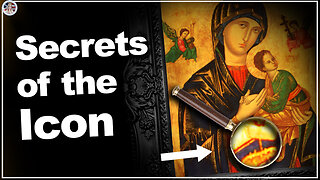 7:42
7:42
America Needs Fatima
1 day agoMiracle of Our Lady of Perpetual Help
13 -
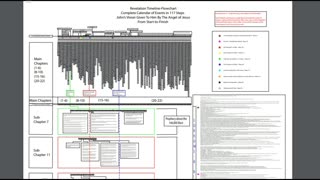 3:45:01
3:45:01
EndofDaysSurvival
2 months ago117 Step Timeline Chart Update - 22 Chapters of Revelation breakout with John's 3 additonal visions!
2381 -
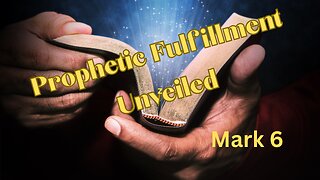 7:37
7:37
Biblical Insights 360
2 months agoLessons in Faith and Miracles: A Journey Through Mark 6
20 -
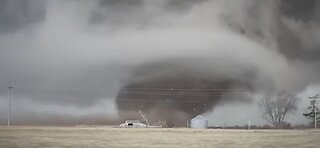 32:40
32:40
FollowerofChrist7777777
1 month agoEnd time biblical signs: March 2024
177 -
 1:30:14
1:30:14
Handinhandwithgodtv
1 month ago10 Questions with Mike Winger (Episode 11)
16 -
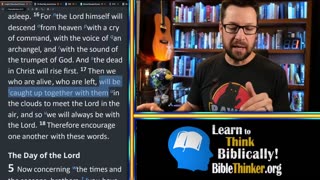 1:21:14
1:21:14
Handinhandwithgodtv
26 days ago10 Questions with Mike Winger (Episode 13)
4 -
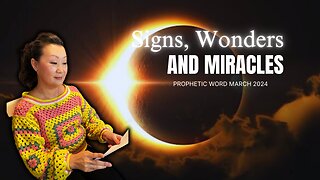 23:47
23:47
WarriorBrideInternational
1 month agoSigns, wonders and miracles
22